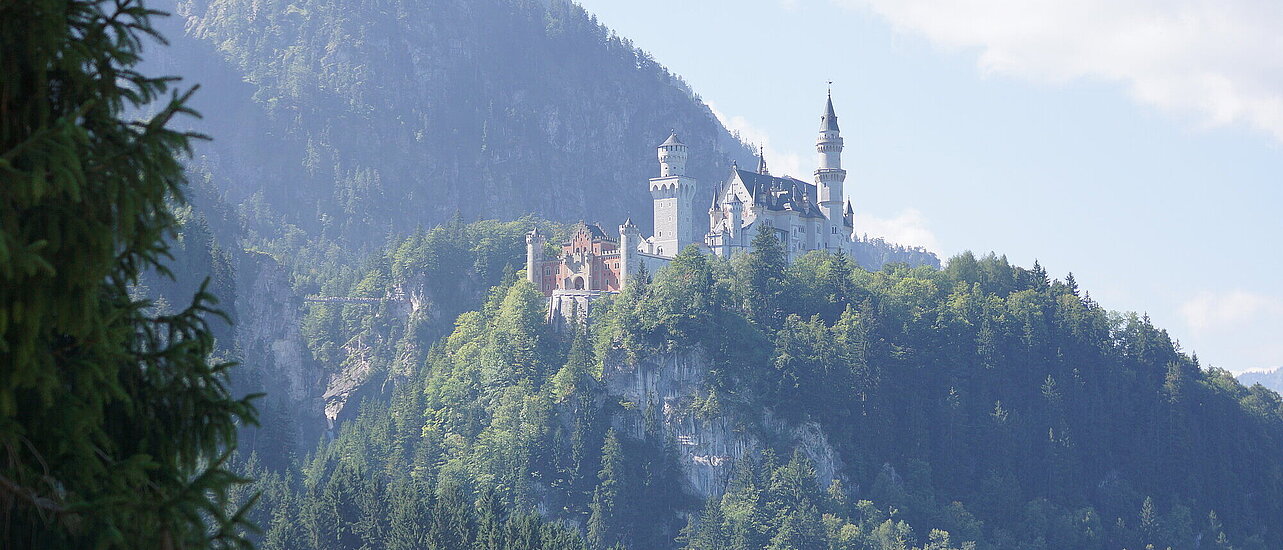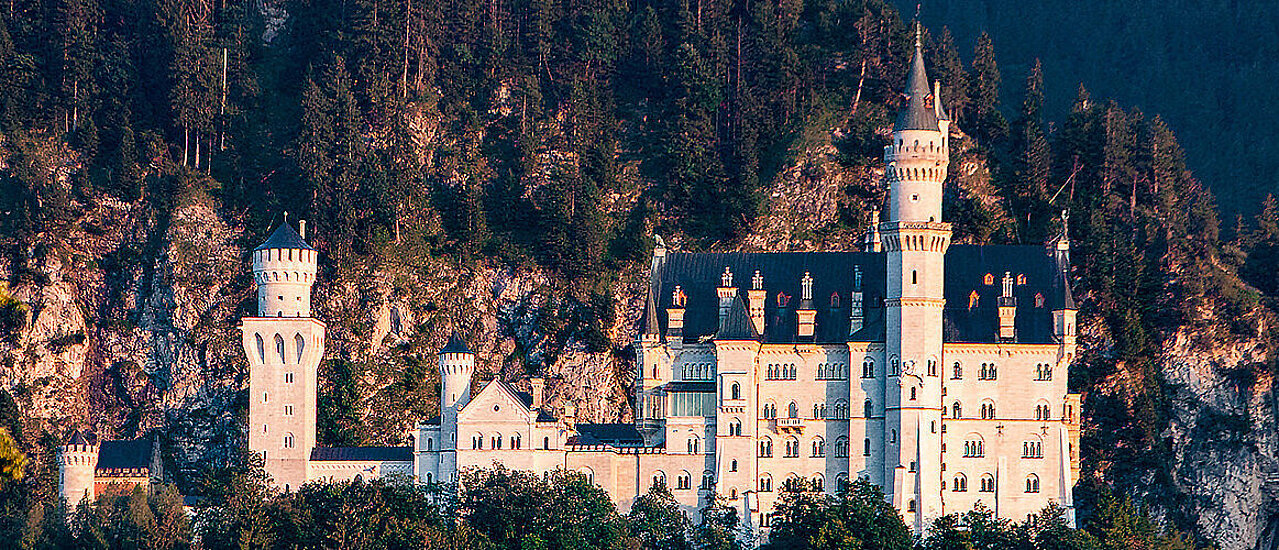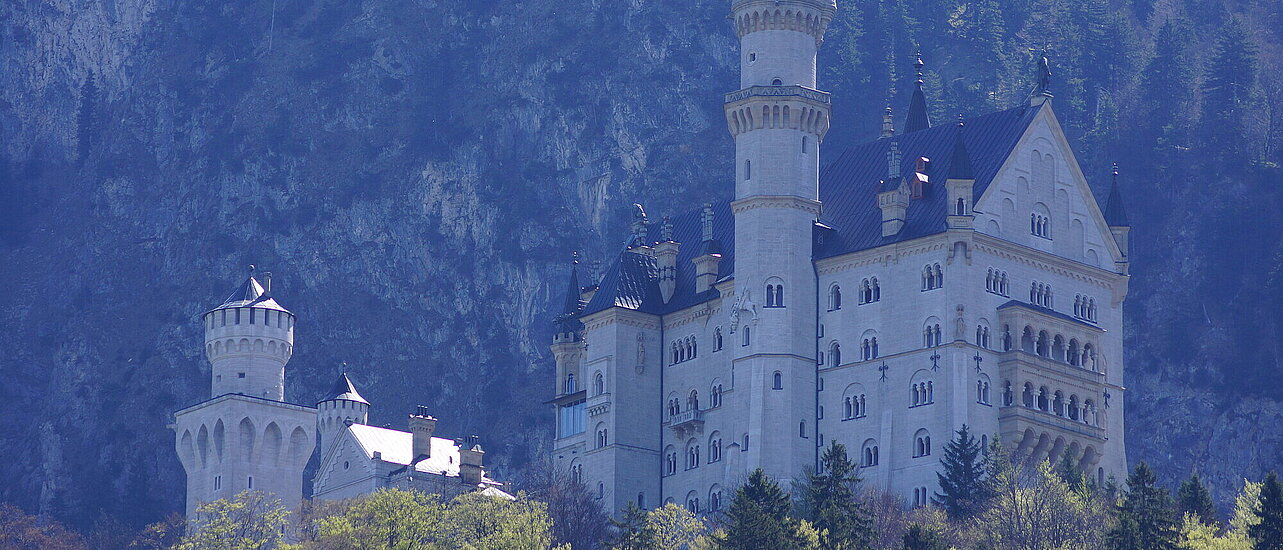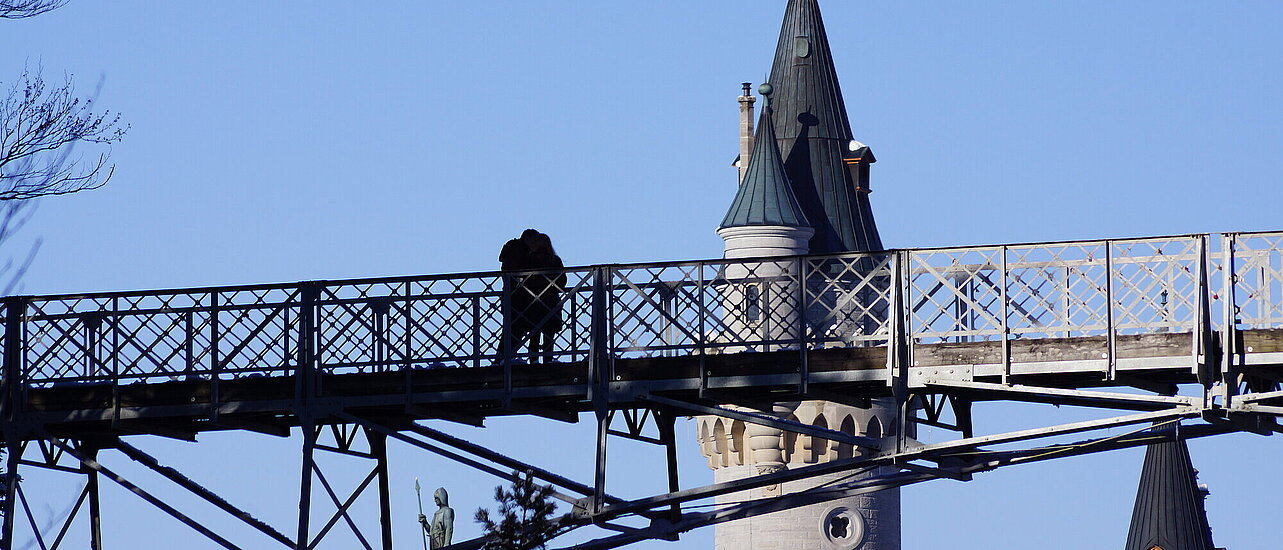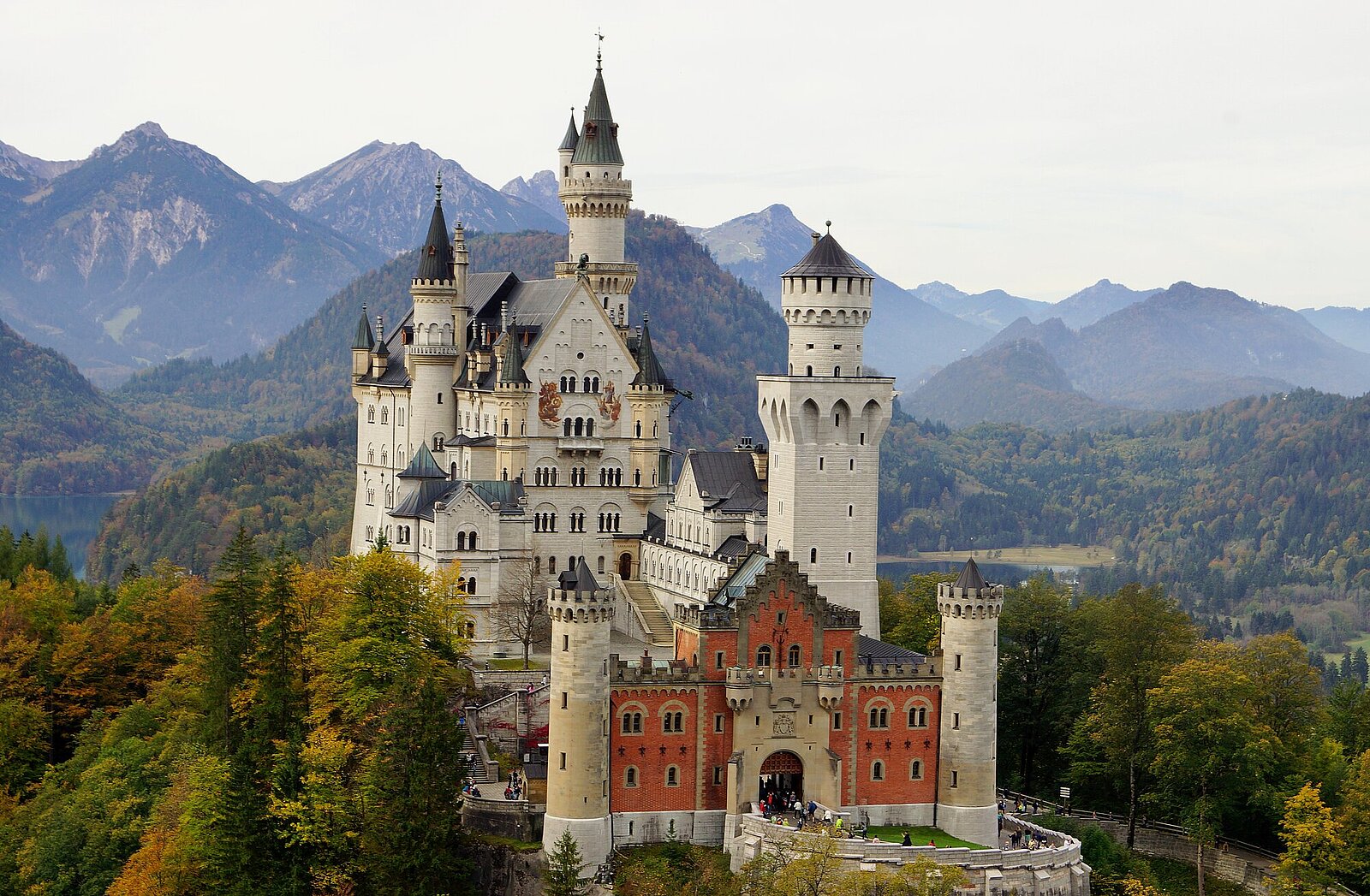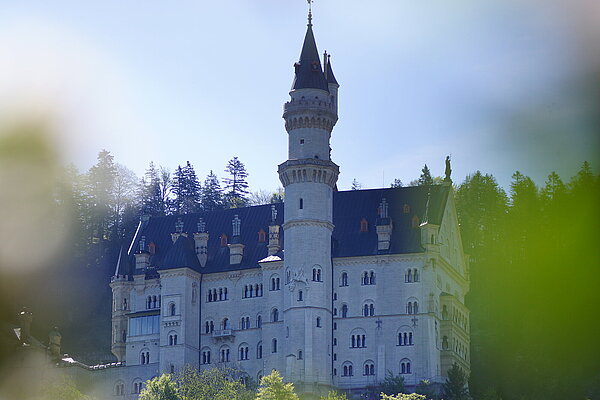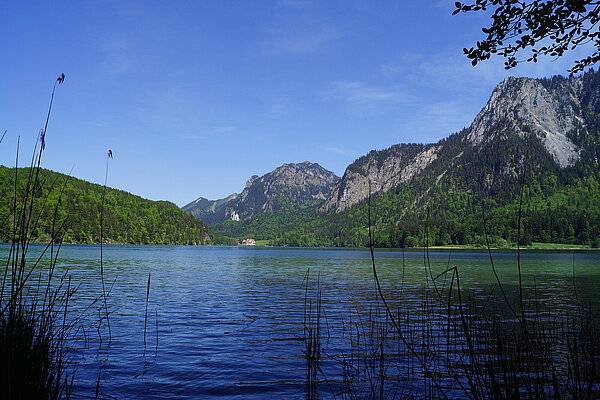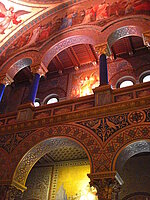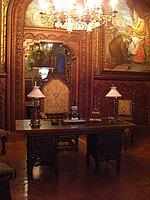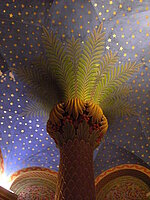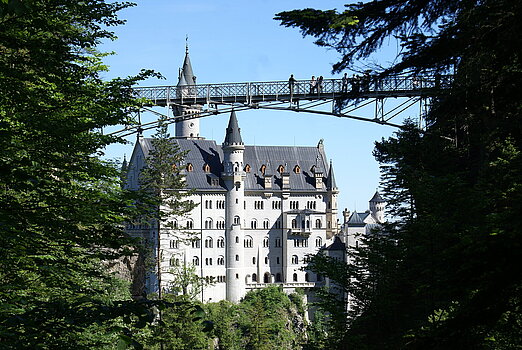- en.schwangau.de
- Sightseeing
- Neuschwanstein Castle
Visitor information: opening times, tickets and notes
Tickets and opening hours
Tickets for the Castles Neuschwanstein and Hohenschwangau and the Museum of the Bavarian Kings are available at the Ticket Center Hohenschwangau (also Reservations).
Ticket sales times for the castles
Summer: april 1 - october 15
monday to sunday 8:00 a.m. - 4:00 p.m.
guided tours 09:00 a.m. - 6:00 p.m.
Winter: 16th october - march 31
monday to sunday 8:30 a.m. - 3:00 p.m.
guided tours 10:00 a.m. - 4:00 p.m.
Guided tours inside the castles
Neuschwanstein Castle admission ticket includes a Tourguide. You can go online to make reservation or purchase the ticket personally at the Ticket Center in Hohenschwangau. The guided tour takes about 30 minutes and is either in German, English or Audio guided in many other available languages.
Accessibility?
There are more than 300 steps in the castle. It does offer an elevator for wheelchairs with standard dimensions. Please request its use in advance at the Ticket Center.
Can my dog come with me in the castle?
Dogs and pets are not permissible in the castle!
May I take pictures in the castle?
Visitors are not allowed to take any photographs or videos in the castle. However, journalists and professional photographers can apply for a permit with the castle administrator to determine an appropriate time and conditions.
Interactive map (Parking, Tickets, Buses, Horse carriages, free WiFi)
Royal View: 360° Panoramic picture
The building Neuschwanstein
The "Castrum Swangowe" was first documented in 1090. Then, two castles were standing on the site of today's Neuschwanstein Castle - medieval castles named Hohenschwangau and Hinterhohenschwangau.
The name Neuschwanstein appears for the first time in a document from 1397. However today's Hohenschwangau was built at this time below the present-day Neuschwanstein Castle in the district of Hohenschwangau.
The Crown Prince and later as King Ludwig II, spent his childhood in Hohenschwangau Castle. Through many hikes and walks around the ruins of the front and of the back Hohenschwangau, he discoverd the later site for his first castle.
In 1869 construction commenced of the Neuschwanstein Castles.
In the next two decades, hundreds of workers and craftsmen were employed on the site. King Ludwig II spent during the first years a few nights in the gatehouse of the castle in order to supervise the construction work.
The castle was built of stone construction and with other types of rock. The white limestone facade surfaces came from the nearby quarry, Alter Schrofen, from the district of Schwangau Alterschrofen.
When King Ludwig II died on 13th June 1886, the Neuschwanstein Castle had not yet been completed and the construction work continued until 1892.
Just six weeks after the death of King Ludwig II the castle opened again for visitors. In the first eight weeks, around 18.000 people visited the castle. Today the castle attracts some 1.5 million visitors a year.
The interiors of Neuschwanstein Castle
In the throne room, the forms of Romanesque, Gothic and Byzantine art were mixed and supplemented by the "new" technical achievements of the late 19th century.
The figures of the Patrona Bavariae and depicting St. George refer to the traditions of the region of the Allgäu.
Indicative of its natural surroundings, Neuschwanstein bears its motives from the world of theatre: Christian Jank, who provided the design drawings for the Castle, worked previously as a background artist and took his inspiration from his work in previous setting designs.
From over 200 rooms, only 20 were completed before the mysterious death of the king. Most of these areas are shown in the castle tours.

